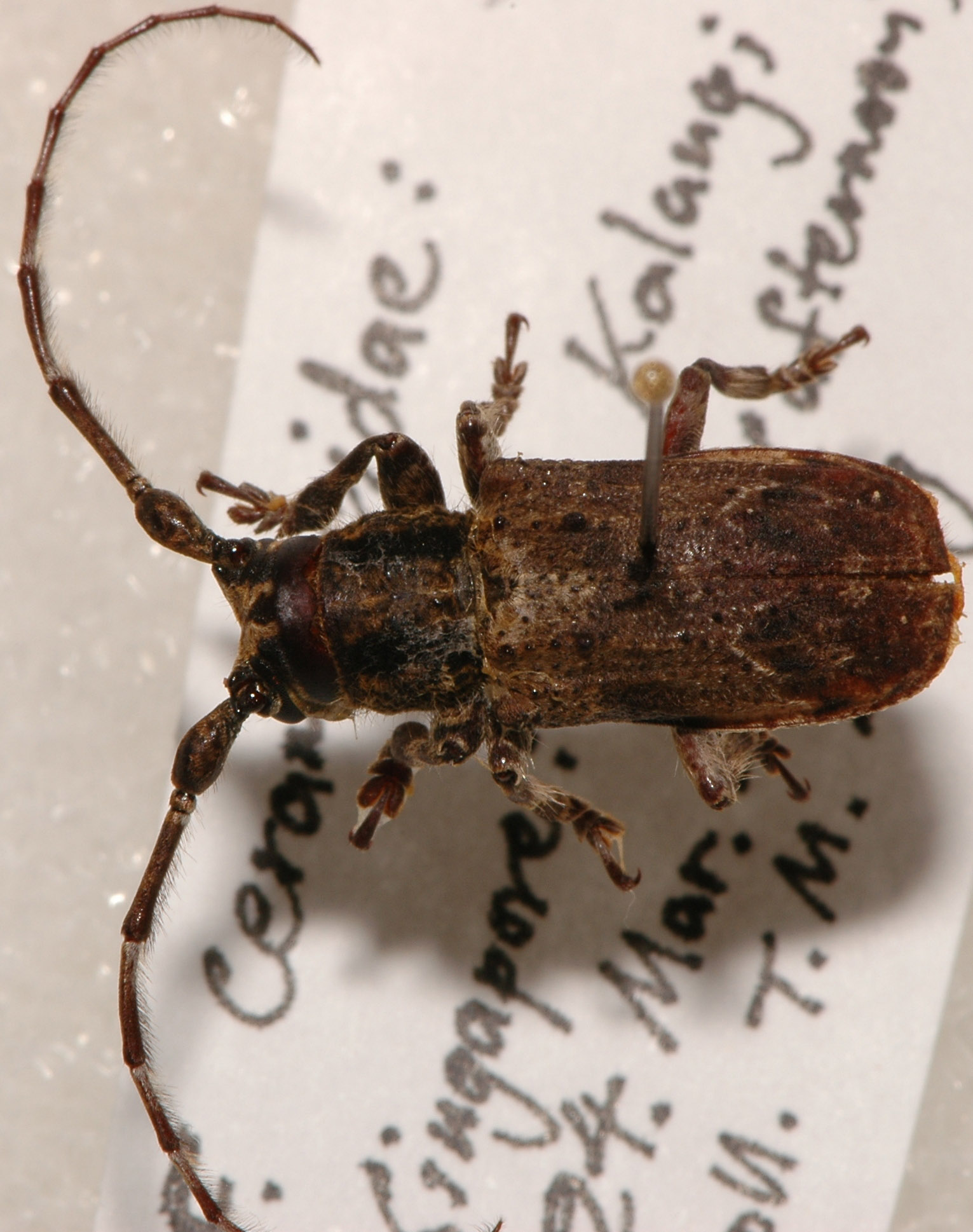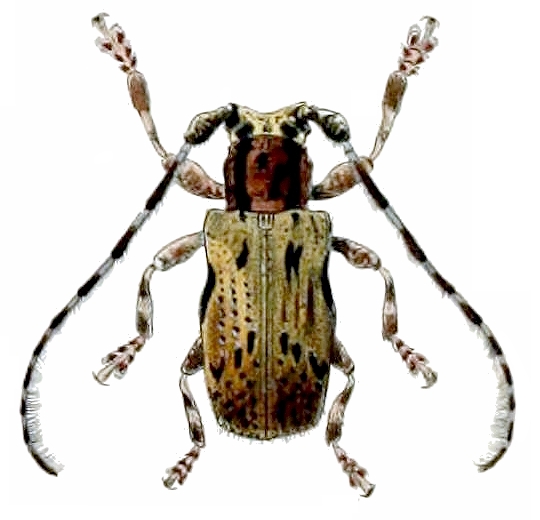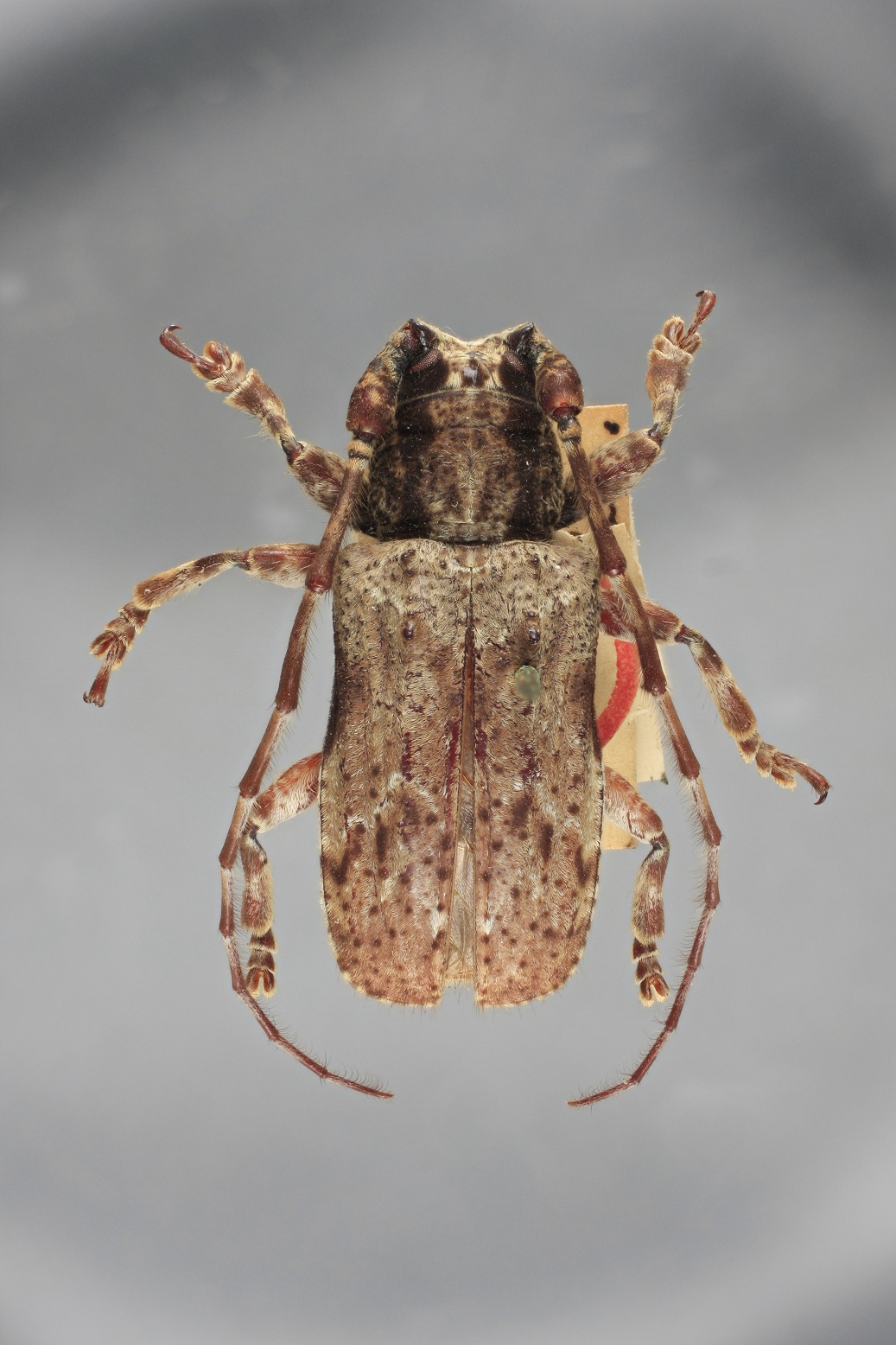| Author |
 Topic Topic  |
|
|
loongfah
Member Purpuricenus
 
Singapore
376 Posts |
 Posted - 01/04/2013 : 11:11:17 Posted - 01/04/2013 : 11:11:17



|

394.5áKB
Not sure what this is? |
Edited by - Xavier on 28/01/2016 11:19:12 |
|
|
Beckey
Member Rosalia
  
Japan
553 Posts |
 Posted - 01/04/2013 : 13:35:01 Posted - 01/04/2013 : 13:35:01



|
| It might be Daxata ustulata Pascoe, 1866, but I'm not sure. |
 |
|
|
loongfah
Member Purpuricenus
 
Singapore
376 Posts |
 Posted - 01/04/2013 : 17:13:56 Posted - 01/04/2013 : 17:13:56



|
Attached is the illustration by Pascoe of Daxata ustulata

114.53áKB
Other than the color difference which could be due to the freshness of the pubescence, there are few points of structural difference. According to the description and the illustration:
1) at the base of elytra, there are a few shining granules and two elevated lines, the innermost simulating a crest; (the elevated lines are lacking in my specimen)
2) behind the shoulder the elytron is slightly bowed and marked with a dark-brown longitudinal patch; this bowed feature is less distinct in my specimen.
There is another Daxata (Taxada) sumatrensis Breuning,1961, and a Daxata confusa Pascoe,1869. I have Pascoe's description of D. confusa. It doesn't seem to be the one either. |
 |
|
|
dryobius
Member Rosenbergia
   
USA
1889 Posts |
 Posted - 01/04/2013 : 21:33:22 Posted - 01/04/2013 : 21:33:22



|
Pascoe's illustrations are not reliable.
Breuning's keys are not reliable.

383.98áKB |
 |
|
|
Robert
Member Rosenbergia
   
Canada
1252 Posts |
 Posted - 01/04/2013 : 21:49:41 Posted - 01/04/2013 : 21:49:41



|
Dan, if I go by your picture's name, the specimen you posted is Daxata ustulata, type, from BMNH.
It is clearer to have the name associated.  |
Robert V. |
 |
|
|
dryobius
Member Rosenbergia
   
USA
1889 Posts |
 Posted - 01/04/2013 : 23:02:43 Posted - 01/04/2013 : 23:02:43



|
| sorry, I forgot to add it. yes, it is the holotype from the BMNH |
 |
|
| |
 Topic Topic  |
|


